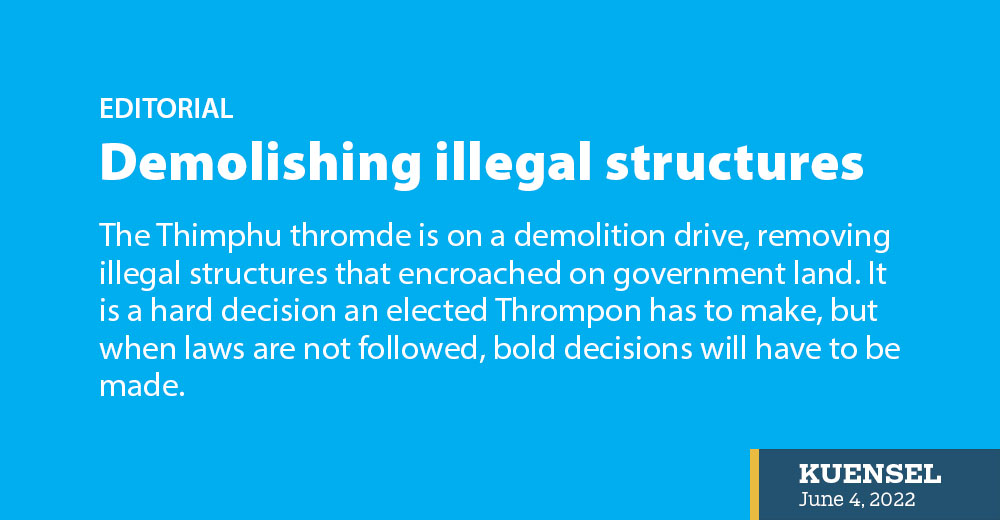The Thimphu thromde is on a demolition drive, removing illegal structures that encroached on government land. It is a hard decision an elected Thrompon has to make, but when laws are not followed, bold decisions will have to be made.
The thromde had notified the owners of their illegal constructions. They were given enough time to remove their structures. The sight of excavators at the Olakha automobile workshop was the last resort – after people refused to abide by the notifications and warnings. At the site, one even confessed that he waited for the demolition team, assuming the warnings would be all sound and no fury. Many waited for others to start removing, convinced that it would be a loss if the thromde didn’t mean what they said they would do. The last-minute rush yesterday was deliberate.
The thromde will not stop after Olakha. They will do the same to all violators in the city. There are 145 defaulters, the thromde’s inspection team has found. Illegal structures are a problem in many cities. In the capital city too, notwithstanding building rules, illegal structures whether on private land or government land crops up every now and then. The demolition carried out once in a while is not scaring or convincing people. Illegal huts are an eyesore. It not only ruins the aesthetic of the city but breeds other problems including crime.
The lure for quick money encourages people to encroach. At Olakha, the extensions that jut out on government land do not belong to the building owners, they are constructed and rented out by those who leased the property. It is choking the already congested roads. Driving to the workshop area is a nightmare. In the core city, every inch of space is being converted into commercial space. The setback rule in construction has become a setback for planners.
Meanwhile, the city is getting crowded and is being worsened by the increasing number of vehicles. The 145 violators of thromde rules are related to illegal structures. The number could be alarming if the thromde inspectors check whether building owners have followed the approved design and drawings of buildings. Despite the increasing number of vehicles, the parking problem in the city is also attributed to converting parking space to commercial space. When landlords do not provide parking space for tenants, vehicles overflow on the congested roads making the already narrow roads narrower.
Parking space, it is said, is an integral part of urban development planning. It was recognised and became a rule. Implementation on the ground is missing. Another bold decision could be demolishing commercial space approved as a parking lot. There is one vehicle for every two people in Thimphu. Where is the space?


